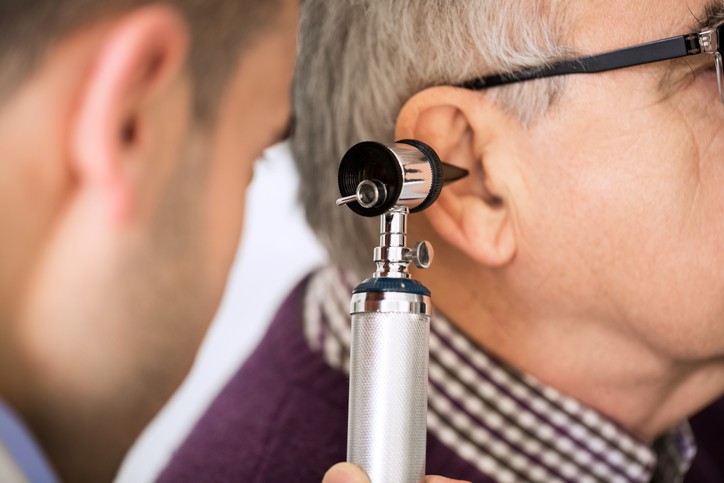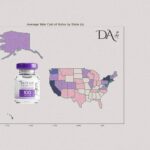Earwax, while often seen as bothersome, actually plays a vital role in maintaining healthy ears. It’s a natural cleaning agent that works to keep your ear canals clear of debris, but sometimes, too much earwax can build up and cause discomfort or even hearing issues. Understanding how to safely remove ear wax is important for ear hygiene.
 Doctor Examining patient's ear to check for earwax buildup
Doctor Examining patient's ear to check for earwax buildup
Why Earwax is Important
Earwax, also known medically as cerumen, is far from just ear gunk. This substance is produced by glands in your ear canal and serves several important functions. Acting as a natural cleanser, earwax traps dead skin cells, hair, dust, and other small particles, preventing them from reaching deeper into the ear canal and potentially causing damage. It then slowly migrates out of the ear, carrying this debris with it. Beyond cleaning, earwax also boasts antibacterial and antifungal properties, offering a degree of protection against infections. In fact, a lack of earwax can lead to dry, itchy, and uncomfortable ears.
When Earwax Becomes a Problem
Despite its benefits, excessive earwax can become problematic. When earwax accumulates and hardens, it can lead to a blockage in the ear canal. This buildup can manifest in a variety of uncomfortable symptoms, including earaches, a feeling of fullness in the ear, potential ear infections, and even a cough. The latter occurs because impacted earwax can stimulate a branch of the vagus nerve located in the outer ear. Perhaps the most noticeable issue caused by excessive earwax is hearing loss, as the blockage can prevent sound waves from reaching the eardrum effectively.
Medical guidelines from organizations like the American Academy of Otolaryngology–Head and Neck Surgery generally advise against routine earwax removal unless it’s causing symptoms. However, it’s not always easy to determine if earwax is the root of the problem without attempting to remove it and observing if symptoms improve.
Understanding Earwax Production
The scientific term for earwax, cerumen, originates from the Latin word “cera,” meaning wax. Earwax production begins in the outer ear canal, where secretions from sebaceous glands (oil glands) and modified sweat glands mix together. Normal jaw movements from activities like chewing and talking help to naturally move these secretions along the ear canal towards the ear opening. Once exposed to air, the secretions dry and flake off harmlessly.
However, earwax can become problematic when it accumulates debris or remains in the ear canal for extended periods, leading to hardening and dryness, which increases the likelihood of blockages. Certain conditions that cause dry, flaky skin, such as eczema, can also contribute to the formation of hard earwax. Furthermore, as people age, the consistency of glandular secretions can change, making it harder for earwax to naturally migrate out of the ear canal. Genetics also plays a role; some individuals naturally produce drier earwax that is more prone to clumping. Notably, dry earwax is more prevalent among people of East Asian descent.
Safe and Effective Earwax Removal Methods
If you’re experiencing symptoms of earwax blockage, there are several methods for ear wax removal. While medical professionals can remove earwax, making it the most common procedure performed by otolaryngologists in primary care, there are also safe do-it-yourself approaches you can try at home.
Do-it-Yourself Methods
A common mistake people make is attempting to remove earwax with cotton swabs. This is generally discouraged because cotton swabs often push earwax further into the ear canal, potentially worsening the blockage. Instead, consider using simple solutions like water, saline solution, or hydrogen peroxide.
To use these liquids, soak a cotton ball and tilt your head so that the ear you want to treat is facing upwards. Gently drip a few drops of your chosen solution into the ear canal. Maintain this head position for about a minute to allow gravity to help the fluid penetrate the earwax. Then, tilt your head in the opposite direction to allow the fluid and softened earwax to drain out. You can also use a bulb syringe to gently flush the ear canal with lukewarm water.
It’s important to remember that earwax forms in the outer part of the ear canal, not deep near the eardrum. If you experience a buildup of earwax right against the eardrum, it’s often a result of previous, unsuccessful attempts at removal that pushed the wax further in.
Over-the-Counter Ear Drops
For more stubborn earwax, over-the-counter ear drops designed to break up earwax are available. These eardrops come in two main types: water-based and oil-based. Water-based ear drops often contain ingredients like acetic acid, hydrogen peroxide, or sodium bicarbonate to dissolve earwax. Oil-based ear drops, on the other hand, work by lubricating and softening the earwax, making it easier to come out naturally or with gentle flushing. Studies haven’t definitively shown one type to be more effective than the other, so you can choose based on personal preference.
Often, ear drops alone will loosen the earwax sufficiently. In other cases, they may need to be followed by gentle flushing with a bulb syringe and lukewarm water to remove the softened wax. However, it’s crucial to avoid using a bulb syringe if you have a damaged eardrum, as water entering the middle ear can lead to serious infections.
Professional Removal by Clinicians
Medical professionals, such as doctors or otolaryngologists, can also remove earwax blockages. They employ similar techniques to DIY methods, but with greater expertise and a clearer view of the ear canal. Clinicians also have specialized tools at their disposal, such as slender, spoon-shaped curettes, designed to safely navigate the narrow ear canal and mechanically remove earwax.
Special Considerations for Hearing Aid Wearers
Individuals who wear hearing aids are more prone to earwax buildup. Hearing aids can obstruct the natural migration of earwax out of the ear canal. Furthermore, they can sometimes stimulate the glands in the ear canal to produce more earwax. It’s estimated that a significant percentage of hearing aids sent in for repair, as high as 60% to 70%, are damaged by earwax. Earwax can clog vents and receivers and its acidity can degrade hearing aid components. If you wear a hearing aid, it’s advisable to regularly consult with your primary care physician or audiologist to check for earwax buildup and ensure proper ear hygiene.
Image: didesign021/Getty Images
